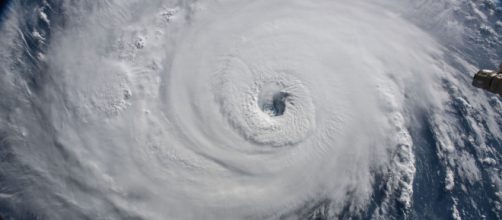The biggest storm of 2018, Hurricane Florence, has begun to take its toll on the US by lashing out at North Carolina's outer banks and southeastern coast, according to the Irish Times.
The most significant impact is expected for Friday when it is anticipated that the eye of the storm will reach land at North Carolina's southern coast. Predictions indicate that the storm will then slow considerably, resulting in the risk of huge amounts of water being deposited over both North and South Carolina.
The White House has stated that US president Donald Trump is being kept updated on the storm by authorities and is keeping a close eye on its progression.
I was just briefed on Hurricane Florence. FEMA, First Responders and Law Enforcement are supplied and ready. We are with you! https://t.co/mP7icn0Yzl pic.twitter.com/a8KQ0lcoSD
— Donald J. Trump (@realDonaldTrump) September 13, 2018
Hurricane Florence to bring eight months of rain
Earlier this week, over 1.7 million people living in North and South Carolina, as well as Virginia, were urged to evacuate their homes as Florence is expected to deliver eight months of rain in as little as a three day time period.
The US National weather Service has stated that up to 5.2 million people are living in regions that are under a hurricane watch and 4.9 million are resident in areas that are covered by tropical storm warnings.
Officials have urged the public not to take the storm's power for granted, despite the fact it has been downgraded to a category 2 hurricane. With winds of 165km/h, these conditions still being treated as life-threatening.
Although winds have eased in intensity, they are now reaching a much larger region, which means a greater area is now vulnerable to the storm's impact.
Hurricane Florence's path
A recently released forecast has illustrated how Florence's path appeared to be more southerly than what experts had originally predicted
Apart from the Carolinas, Virginia and Georgia have also declared states of emergency due to the tremendous impact the storm is having in the US's Southern regions.
The report also revealed how heavy rains are expected to make their way into the Appalachian mountains, affecting parts of Alabama, Tennessee, Kentucky, and West Virginia.
The number one power supplier in North and South Carolina, Duke Energy, has warned its customers that up to 3 million of them could be left in the dark, as the storm is likely to wipe out electricity. The company also revealed how it could take up to several weeks for the issue to be rectified.
So far, there has already been an average of 11,000 power outages reported in the North Carolina area and rapidly increasing numbers of flights are being cancelled.
Airbnb has announced that it is offering free shelter for evacuees and relief workers from Hurricane Florence.


